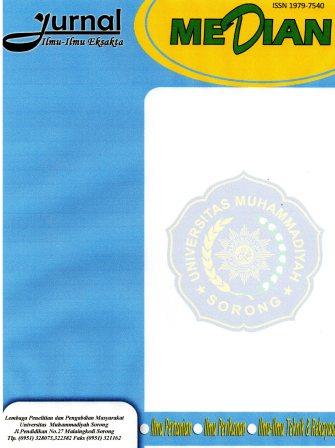Student Perception and Preferences on Types of Plants Desired to be Planted in Campus Area Victory University Sorong
DOI:
https://doi.org/10.33506/md.v17i1.4676Keywords:
Perception, Preferences, Plants, CampusAbstract
The management of green space on the Victory Sorong campus actually still has great potential to be improved because there are still many empty areas that have not been used. Regarding planting, students can express their opinions about the current condition of the campus environment and provide input on the types of plants they want. The purpose of this study was to determine students' perceptions and preferences regarding the types of plants that are expected to be planted in the Victory Sorong University campus area. This study was conducted from January to February 2025 at Victory Sorong University with a sample of 296 respondents from 6 Faculties. Data collection was carried out by distributing questionnaires using Google Form and interviews. Data analysis was carried out descriptively qualitatively. The results of the study showed that students of Victory University Sorong showed various perceptions about the condition of the campus environment related to the adequacy of green space, the importance of the existence of plants, the desired location for planting, and the willingness to be involved in campus greening activities. Meanwhile, the plant preferences mentioned by respondents can be grouped into shade plants, flowering plants and ornamental leaf plants, as well as fruit and medicinal plants. This shows that students not only prioritize aesthetic factors that provide visual beauty but also want shade, coolness, results that can be directly enjoyed from fruits and their benefits as TOGA so that balance can be created throughout the campus area
References
Dewi, K. N., Amatullah, A. A., Rochim, M. A., Larasati, S., Prastika, D., & Maulidhani, A. N. (2023). Pengaruh Jarak Tanam Antar Pohon terhadap Keasrian Kampus Universitas Negeri Semarang. Jurnal Majemuk, 2(3), 412-421.
Fitriani, I. N., & Susanti, R. (2020). Persepsi Mahasiswa terhadap Ruang Terbuka Hijau Ideal di Kampus Undip Tembalang. Jurnal Teknik PWK (Perencanaan Wilayah dan Kota), 9(3), 151-158.
Indriani, A., Polli, B., & Ogie, T. (2021). Potensi Daun Trembesi (Albizia saman (Jacq.) Merr.) Sebagai Bioakumulator Logam Berat Timbal (Pb) Di Kota Manado. Agroekoteknologi Terapan, 2(2), 21-31.
Pattiwael, M. (2018). Konsep Pengembangan Ekowisata Berbasis Konservasi Di Kampung Malagufuk Kabupaten Sorong. J-DEPACE, 1(1), 42-54.
Ponisri, P., Fajeriana, N., Ali, A., Farida, A., & Irnawati, I. (2022). Penghijauan Dan Penataan Taman Kampus Universitas Muhammadiyah Sorong. Abdimas, 4(2), 29-34.
Rahman, A., Najoan, J., & Polli, M. G. (2015). Evaluasi Aspek Fungsi Tanaman Pada Lanskap Jalan Kampus Universitas Sam Ratulangi. Jurnal Cocos, 6(17), 1-10.
Rinasari, N. A., Kosasih, A. D., & Wijarnako, B. (2023). Pembelajaran Lingkungan Hidup Berbasis Tanaman Obat Keluarga. Primary, 2(3), 187-193.
Rohita, T., Rohman, A. A., & Nurkholik, D. (2023). Penghijauan Sebagai Upaya Mewujudkan Kampus Ramah Lingkungan (Green Campus) yang Nyaman, Aman, Indah dan Sehat. Abdimas Galuh, 5(2), 1553-1558.
Sahara, A., Yanti, D., Nurjanah, Manik, N., & Oktafiani, F. (2024). Penanaman Pohon di Area Kampus Sekolah Tinggi Teknologi Migas Program CSR PT Elnusa Tbk dengan Prodi D3 Teknik Instrumentasi Elektronika Migas 2024. Journal of Human And Education, 4(6), 192-197.
Santoso, S., Lestari, S., & Samiyarsih, S. (2012, November 27-28). Inventarisasi Tanaman Peneduh Jalan penyerap Timbal Di Purwokerto. Prosiding Seminar Nasional, 1.
Setiawan, E., & Arsandrie, Y. (2023). Green Open Space Sebagai Fasilitas Belajar Di Lingkungan Kampus Universitas Muhammadiyah Surakarta (UMS). SIAR IV : Seminar Ilmiah Arsitektur, 576-585.
Wattimena, L., Turot, A., Pattiwael, M. Hetharia, C., & Loppies, Y. (2019). Kepedulian Terhadap Lingkungan : Penanaman Bibit Pohon Di Taman Wisata Alam (TWA) Kota Sorong Provinsi Papua Barat. J-DEPACE, 2(1), 103-111.
Downloads
Published
How to Cite
Issue
Section
License

This work is licensed under a Creative Commons Attribution-ShareAlike 4.0 International License.
Authors who publish with this journal agree to the following terms:
Authors retain copyright and grant the journal right of first publication with the work simultaneously licensed under a Creative Commons Attribution-ShareAlike (CC BY-SA)Â that allows others to share the work with an acknowledgement of the work's authorship and initial publication in this journal.
Authors are able to enter into separate, additional contractual arrangements for the non-exclusive distribution of the journal's published version of the work (e.g., post it to an institutional repository or publish it in a book), with an acknowledgement of its initial publication in this journal.
Authors are permitted and encouraged to post their work online (e.g., in institutional repositories or on their website) prior to and during the submission process, as it can lead to productive exchanges, as well as earlier and greater citation of published work.





